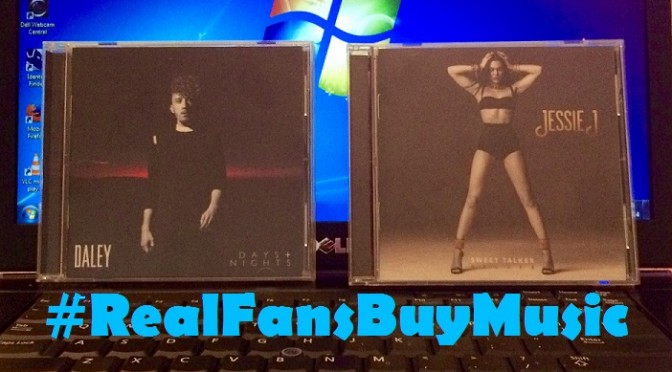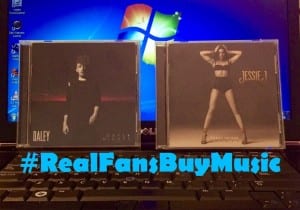When we’re living in real-time, it’s tough to spend much of that time in reflection mode. We get up and go on to the next big project or new gadget. We keep moving forward. Because of this forward motion, it’s also tough to tell sometimes just how drastic some of the changes around us really are.
But ask anyone who works in the music industry, and they can tell you without fail that in the last decade-plus, everything about the way consumers interact with music has changed. Once a world of several huge, competing record labels flush with profit from impressive album sales is now an industry reeling from debt at virtually every corner. 2014 has now seen the lowest year for platinum-certified album sales ever recorded.
Lowered… some might say tragic music sales are now being accepted as the new normal in music. Even the official Billboard charts in the US acknowledges as much in a recent retooling of how it determines chart placement. Here’s more on the new chart formula directly from Billboard.com…
The Billboard 200 albums chart will premiere its biggest upgrade in more than 23 years, transforming from a pure sales-based ranking to one measuring multi-metric consumption.
[…]
The revamped chart will premiere with data from Thanksgiving week (ending Nov. 30), one of the most active music release periods of the year. The new methodology aims to provide a better sense of an album’s popularity by reflecting not just sales, but consumption activity.
The updated Billboard 200 will utilize accepted industry benchmarks for digital and streaming data, equating 10 digital track sales from an album to one equivalent album sale, and 1,500 song streams from an album to one equivalent album sale. All of the major on-demand audio subscription services are considered, including Spotify, Beats Music, Google Play and Xbox Music. Current artists likely to benefit from this change in methodology include Ariana Grande,Hozier and Maroon 5, among others, as their streaming and digital song sales have been outperforming their album sales in recent weeks.
Yes it’s true that YouTube views, Soundcloud plays and subscription services are important ways of connecting with music today. But let’s be honest for a minute about what they also do. Online sources make it really easy for consumers to just not buy music, and that’s exactly what they are doing.
Contrast this reality with the growing online fandom of contemporary music stars and it’s even more shocking.
The biggest-selling solo artist of 2014, Taylor Swift, boasts an astounding 48 million Twitter followers, and a loyal legion of fans– #Swifties– that profess their unyielding devotion to her at every turn. Many in the fandom world proclaim to know all of her songs, have tons of Taylor merch, and have been to every single concert. it’s no doubt that upon the release of Swift’s 5th album 1989, her most loyal fans were a huge part of earning her the best album sales week in more than a decade. Weeks later, 1989 has cleared the 2 million mark and continues to top the recently revamped Billboard charts.
But the question remains– if Swift presumably has so a huge legion of fans, why have so few chosen to actually purchase the smash hit album? 48 million Twitter followers, yet only 2 million in sales? This is not to sound diminutive, as almost any other artist would give the first available limb to have anything close to the sales power of mighty Taylor Swift. Still there seems to be a huge disconnect between those that proclaim fandom, yet aren’t buying the album.
The answer can be found promptly on YouTube. One look at the 339 million view count of the album’s lead single Shake it Off and 144 million view count of second single Blank Space gives a proper indication of how some fans are learning the artist’s material. For all the so-called fans out there that are actually making an investment in Taylor Swift, and everyone that worked so hard to make her smash hit album what it is, there’s still a lot more that are enjoying the music free of charge.
Investment is the key word here. It takes a lot of talented people to make a commercial album– writers, producers, mixers, singers, musicians and a gaggle of development experts. If fans choose to skip out on buying the album, they are not only robbing the artist that is behind the album, but endangering the entire music business itself.
This culture of reward without purchase needs to change. Whoever your favorite artist happens to be, don’t just stream their music or pirate it for free by racking up YouTube hits. Take a chance on these people and actually BUY their album. If you’re anything like me, you’ll quickly find that the holistic journey of an artist is much more important than their promo singles sailing through the radio.
Had I never chosen to invest in the full album Days and Nights by British singer Daley, I would have never discovered one of R&B’s most incredible songs of 2014– the hauntingly beautiful She Fades. It’s now one of my favorite songs to listen to. Likewise with fellow Brit Jessie J, her musical talent extends far beyond the girl power single Bang Bang, but also is embodied through awesome Sweet Talker tracks like Get Away, Seal Me With a Kiss and Masterpiece.
So whoever it is that you enjoy, be a real fan in 2014 and 2015. Take a chance on them, and actually BUY their music.


As a huge fan of all sorts of weird sounds, I am sort of heartened by the fact that some album managed to sell a few copies before the end of the year. As of early October no album had managed to sell a million copies in 2014.